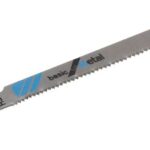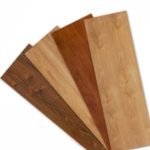How to use a jigsaw on wood? Purpose of the tool
The main way that you can do it with a jigsaw involves figure cutting. The tool is also used for classic straight cuts. But more often they make round cuts, complex contours of various parts. The basic rules for working with plywood, chipboard and other wooden blanks are described in detail in this material.
The content of the article
Purpose of the tool
Before understanding how to use a jigsaw, it is recommended that you familiarize yourself with the purpose of the tool. Unlike saws, which make straight cuts, this tool is capable of creating rounded and shaped cuts.
This is due to the special shape of the frame, which resembles a bow saw. It allows you to make precise cuts, going deeper into the blade. Therefore, if you know how to use a jigsaw correctly, you can skillfully make not only figured, but also classic straight cuts.
Most often, the device is used to work with wooden workpieces, including:
- plywood;
- Fiberboard;
- Chipboard.
This device is used to mainly make curved cuts. Moreover, you can work with a jigsaw both with wood and with other materials, for example, with metal, plastic and even ceramics.
The tool is also used for figured cutting; it is used to give shape to even miniature parts, and also to round corners. It can be used in furniture production, for household purposes and even for the manufacture of clothing accessories.
How to use a jigsaw
Unlike a manual jigsaw, using an electric jigsaw is easier because it requires less effort. Many models are powerful enough to work even with ceramics and fiberglass. Understanding how to use a jigsaw is not difficult. Each model has its own characteristics, but in general the rules are the same:
- Set the pendulum mechanism regulator to the desired position. For example, if you put it in position “0”, as in the photo, then the file only moves up and down. This means that the saw will be of very good quality, but the work is slow.
- Can be set to other positions - “1”, “2” or “3”. Then the saw will move forward with greater and greater speed. The saw will be of less quality, but the work will go much faster.
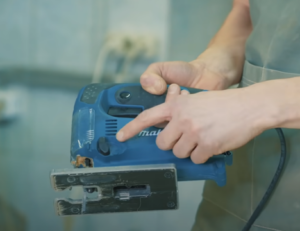
- Next, it’s easy to understand how to use a jigsaw on wood. You need to adjust the frequency of movement of the saw.
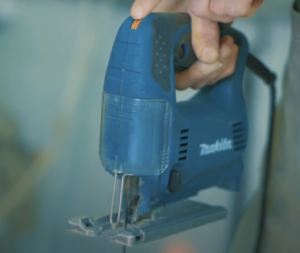
- Place the device on the surface of the part, but do not press too hard, otherwise the file will begin to move to the side. It is enough to hold with 3 fingers without much effort.
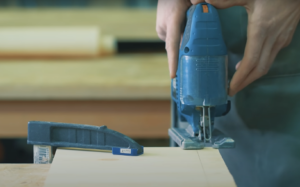
- Press the start button.

- Start sawing.
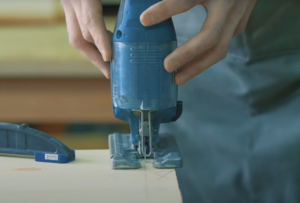
- When figuring out how to use an electric jigsaw, you may encounter the following problem - the device has gone beyond the intended line. To eliminate the violation, you need to slightly steer with your right hand from behind, working literally with one finger.
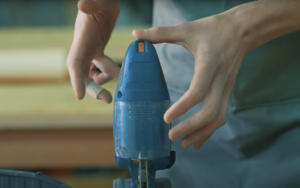
- Continue sawing until the end.
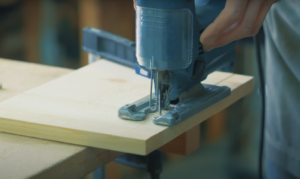
10 useful tips for quality cutting
Now it’s clear that you can cut with a jigsaw. They work mainly with wooden parts, making both straight and curved cuts. Models can be equipped with a guide, have different power and other indicators. Much depends on the quality of the file, that is, the cutting blade.At the same time, there are several cutting principles that should be followed regardless of these parameters:
- There is no need to force yourself while sawing. And practically none. Many novice users believe that they need to apply pressure to improve cutting, but in fact this leads to the opposite situation. You should work slowly, but efficiently. Thanks to this, you can do anything with a jigsaw, including complex cuts.
- It is necessary to choose the correct speed, that is, the number of engine revolutions. You should proceed from the thickness of the part, the structure of the material, and the type of cutting blade. As a rule, this indicator is selected empirically.
- If you think about how to use a jigsaw correctly, you may be faced with a choice between quality and speed. If you work slowly, the cuts will be of high quality, but on the other hand, you will have to spend more time.
- The file must be perfectly sharp. Even if it dulls a little, using a jigsaw will be accompanied by difficulties. Therefore, you need to have a set of several files in stock.
- It is necessary to work with constant breaks, which is especially important if a large volume is planned. It should be noted that severe overheating leads to wear of the teeth, because the metal becomes softer.
- You can learn how to use a jigsaw correctly, but you must first choose the right model. There are quite a few criteria, with the most important being power. It depends on it what material can be worked with, and at what depth the cut can actually be made.
- When it comes to what you can cut with a jigsaw, you can choose from a variety of wood and other materials. But you need to select different files for them.They have special markings that are worth studying in advance. For example, how to cut metal or ceramics with a jigsaw - these are different tasks for which different blades are suitable.
- It is important to understand what can be done with an electric jigsaw, as well as what thickness it is permissible to work with. To do this, pay attention to the dimensions of the saw teeth - the larger they are, the greater the depth of cut. In this case, the maximum thickness should correspond to 3-4 teeth of the cutting element. In this case, it is easy to understand what is being done with a jigsaw and how to work with the tool.
- To figure out how to work with a jigsaw on wood, it is recommended to use auxiliary devices - a side stop or a guide rail. They help make an even cut without much effort. Thanks to this, you can cut metal with a jigsaw, as well as other materials.
- If we give one more piece of advice on how to cut metal with a jigsaw, we can talk about engine speed. When processing soft metals like copper or aluminum, it is better to increase the speed. If you work with a harder surface, for example, a steel surface, the speed, on the contrary, is reduced.
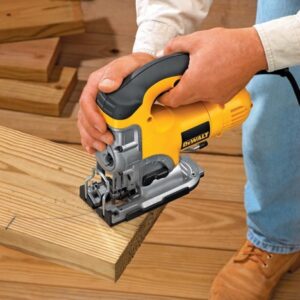
You can figure out how to work with a jigsaw yourself. The tool is quite simple, and even a novice master can master it. It is recommended that you first carefully study the jigsaw operating instructions and practice on rough workpieces. After this, you can begin processing the main parts.

